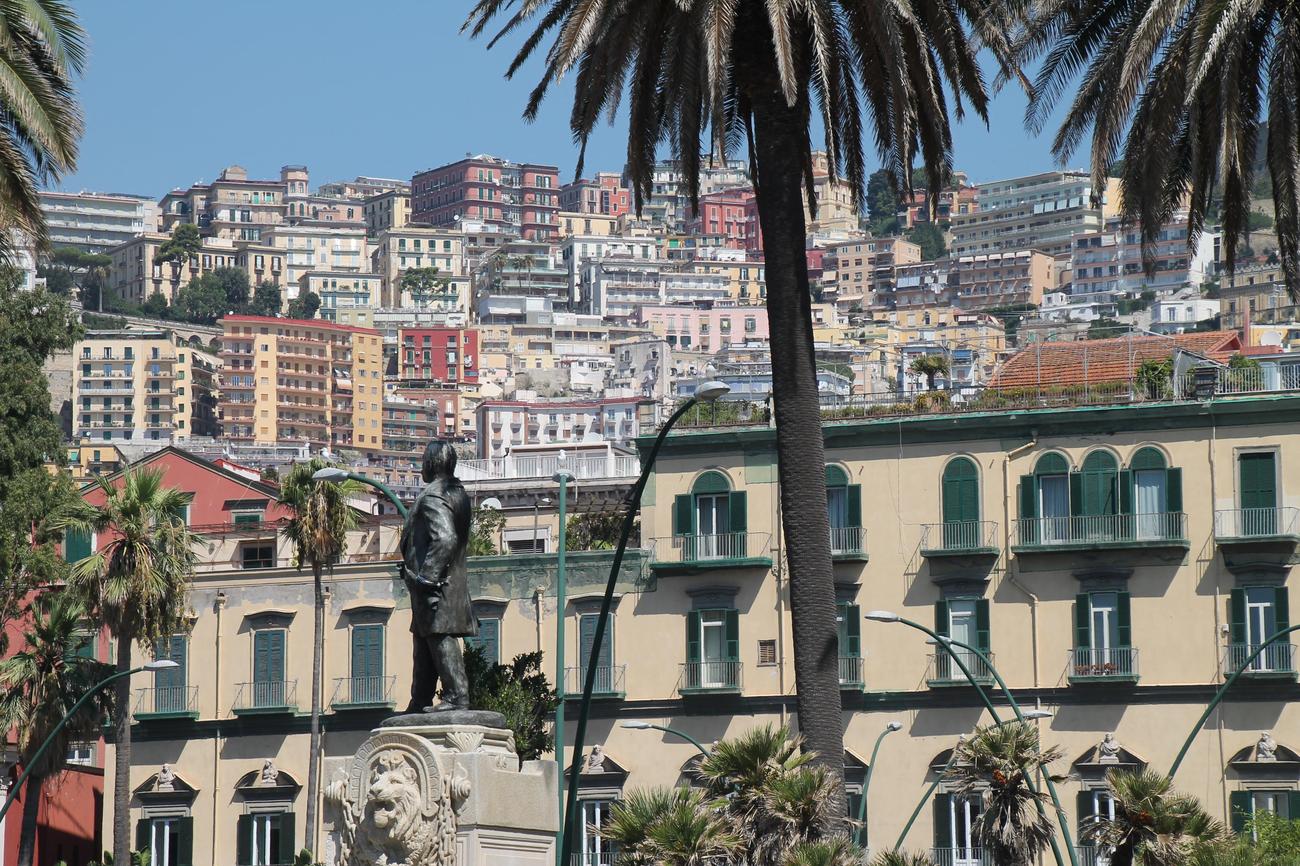Unearthing Naples: Captivating Tales of its Intriguing History

Step into the ancient city of Naples and prepare for a journey like no other. With a history that dates back thousands of years, Naples is a treasure trove of captivating tales just waiting to be discovered. From its humble origins as a Greek colony to its turbulent years under Roman rule, Naples has witnessed it all, leaving behind a legacy that continues to enthrall visitors to this day. As a seasoned travel writer with a passion for uncovering fascinating historical narratives, I invite you to join me on a virtual exploration of Naples, as we delve into its enduring legends, uncover noteworthy milestones, and reveal the remarkable influence of this vibrant Italian city on the world as we know it today.
Unearthing Naples: Captivating Tales of its Intriguing History
What is the interesting history of Naples?
Nestled in the enchanting region of Campania, Naples reveals a captivating history that stretches back thousands of years. A city steeped in myth and legend, it stands as one of the oldest continuously inhabited urban areas in the world. Its story begins in the first millennium BC when it was founded by the Greeks, who named it Neapolis, meaning “New City” in ancient Greek. Over the centuries, Naples has evolved into a vibrant Italian metropolis, pulsating with an unmatched energy and charm.
Ancient Origins and Enduring Legends
As we embark on a journey through time, we must first delve into the ancient origins of Naples. Imagine a bustling Greek colony, thriving with trade and cultural exchange. This was the birth of Neapolis, a city that would become a melting pot of civilizations. With its strategic location along the bay of Naples, it attracted the attention of various cultures and empires throughout history. From the Romans to the Byzantines, and later the Normans, each left an indelible mark on the city’s landscape.
Through the mist of history emerge fascinating legends that continue to enchant and captivate. In Naples, the stories of the sirens, who lured sailors to their doom with their enchanting songs, echo through the ages. The haunting tale of the Cumaean Sybil, a prophetess who assisted the hero Aeneas on his journey, adds an air of mystique to this ancient city. These legends intertwine with the historical fabric of Naples, creating a tapestry of enchanting narratives that beckon us to explore further.
“Step into the mythical realms of Naples, where every cobblestone whispers tales of ancient sailors and prophecy.”
Monarchs, Margherita, and Margherita Pizza
Naples’ rich history includes its fair share of royal stories. From emperors to queens, monarchs have shaped the destiny of this city. In 1889, Queen Margherita of Italy visited Naples, and a humble pizza maker honored her with a special creation. Using the colors of the Italian flag, this now-iconic dish was topped with tomatoes, mozzarella cheese, and basil. The Margherita Pizza was born, forever intertwining Naples’ gastronomic heritage with royalty.
“Discover the delicate fusion of culinary artistry and regal elegance as you savor the flavors of Naples’ beloved Margherita Pizza.”
Unveiling Naples’ Ancient Treasures
Beneath the bustling streets of Naples lie hidden wonders that have survived the test of time. The catacombs, dating back to the 3rd century, transport us to an underground labyrinth of history. These eerie chambers hold the remains of early Christian martyrs and provide a fascinating glimpse into ancient burial customs. As you weave through the narrow passageways, you’ll be struck by the solemn beauty of this subterranean world.
Above ground, the Naples Cathedral stands as a testament to centuries of architectural marvels. Built in the 13th century, its resplendent facade and awe-inspiring interior showcase the city’s rich religious heritage. Step inside, and marvel at the masterpieces that adorn the cathedral’s hallowed halls.
“Peel back the layers of time as you explore the catacombs and bask in the sublime beauty of Naples Cathedral.”
In conclusion, the allure of Naples lies not only in its natural beauty and vibrant atmosphere but also in its history brimming with captivating tales. From its ancient Greek roots to the legends that permeate its streets, Naples offers a tapestry of stories waiting to be discovered. Through my immersive exploration of Naples’ compelling history, I hope to transport you to a bygone era and reveal the enduring influence of this remarkable Italian city.
Keyword: What is the interesting history of Naples?
Naples, Italy is a treasure trove of fascinating history and captivating attractions. From its breathtaking architecture to its delicious cuisine, there are fun facts about Naples Italy waiting to be discovered. Did you know that Naples is home to the world’s oldest working opera house, Teatro di San Carlo? You can find out more interesting tidbits about this incredible city by checking out our article on fun facts about Naples Italy. Prepare to be amazed and let your curiosity guide you as you explore the wonders of Naples.
The History of Naples
[youtube v=”28WxkB61deA”]
The history of Naples is a rich and interesting tale that spans thousands of years. From its ancient origins to its role in the Roman Empire and the Middle Ages, Naples has always been a city of cultural significance. In this article, we will explore the history of Naples and how it became the vibrant and bustling city that it is today.
Ancient Origins
The origins of Naples are steeped in legend. According to popular stories, a siren named Parthenope failed to lure Ulysses with her siren song and committed suicide. Her body is said to have washed ashore on the rocks of the islets of Megaride, where the Castel dell’Ovo stands today. Another mythological version tells of Parthenope, a young girl who died during a storm while her father, the Greek leader Newmello, was traveling to the coast of Campania to establish a new colony. In tribute to her death, the new city was named Naples.
Greek Influence
In 470 BC, the Cumae Greeks founded the city of Neapolis, which means “new city” in Greek. The city was established slightly east of the old city of Parthenope, which is now the historical center of Naples. Neapolis quickly became an important colony of Magna Graecia, along with Cumae and Taranto. The city flourished during this period, with the construction of temples, a theater, a racecourse, and a gymnasium. Neapolis was a center of Greek culture, language, and art.
Roman Rule
During the Roman Empire, Naples came under Roman rule. The Romans were enamored with the Hellenistic culture of Naples and respected the city as a place of Greek civilization. Despite Roman influence, the people of Naples maintained their Greek language and customs. The Romans built elegant villas, aqueducts, and public baths in the city. Christianity also arrived in Naples during this period, with the Apostles Peter and Paul reputedly preaching in the city. Saint Januarius became the city’s patron saint and was martyred in Naples.
Barbarian Invasions
The division of the Roman Empire and the subsequent barbarian invasions greatly impacted Naples. In the early Middle Ages, Naples was invaded by the Goths, who were later driven out by the Byzantine forces. Naples came under Byzantine rule but had to repel attacks from the Lombards and the Vandals. In 661, the East Roman Emperor appointed a Neapolitan Duke to govern the city, granting Naples a degree of independence. The city faced many struggles during this period but managed to survive as an island of civilization in the Italian peninsula.
Norman Conquest
The Normans played a significant role in the history of Naples. They initially came to Naples as mercenaries to help defend the city against its enemies. However, the Normans, led by the Alta Villa dynasty, quickly expanded their power and conquered Sicily and southern Italy. In 1137, Prince Roger II of Sicily reached an agreement with Charles the Hunchback of Anjou, allowing the Normans to gain control of Naples. After the death of Duke Ruggiero, Naples declared its independence and joined the Kingdom of Sicily, with Palermo as the capital.
Spanish Habsburg Period
Naples fell under Spanish rule during the Spanish Habsburg period. The Spanish sent viceroys to Naples to deal with local affairs. Naples became a cultural powerhouse during the Baroque era, attracting renowned artists, philosophers, and writers. The city experienced a brief period of independence in 1647, but Spanish rule was reinstated the following year. In 1656, the city was devastated by a plague that killed half of its population.
Bourbon Dynasty
In 1734, Charles of Bourbon, a member of the Spanish dynasty, ascended to the throne of Naples. Under his rule, Naples experienced a period of reform and progress. Charles implemented new legal codes, established trade relations with the Iberian Peninsula, and supported the growth of various industries, including crafts, ceramics, and shipyards. The city became a center of the Renaissance, attracting artists and scholars from all over Europe.
Italian Unification
After various political changes, Naples became part of the Kingdom of Two Sicilies. The kingdom was ruled by the Bourbon dynasty until the Italian unification in the 19th century. Naples experienced a series of ups and downs during this period, with the implementation of reforms, uprisings, and changes in government. The city underwent significant urban planning and architectural advancements, with the construction of iconic landmarks such as the San Carlo Theatre and the Palazzo San Giacomo.
Conclusion
Naples has a long and fascinating history that has shaped its identity as a city of culture, art, and commerce. From its ancient origins to its role in various empires and kingdoms, Naples has always been a city of importance in Italy and Europe. By understanding its history, we gain a deeper appreciation for the vibrant and diverse city that Naples is today.

FAQ
Q: What is the history of Naples?
A: Naples is one of the oldest continuously inhabited urban areas in the world, founded by Greeks in the first millennium BC. The name of the city comes from the ancient Greek word “Neapolis,” meaning “New City.”
Q: How does Naples compare in size to other Italian cities?
A: Naples is the third-largest city in Italy after Rome and Milan.
Q: Where was pizza invented?
A: Pizza was invented in Naples.
Q: What is the significance of Margherita Pizza?
A: The famous Margherita Pizza was named after Queen Margherita and has its roots in Naples.
Q: Are there any historical attractions in Naples?
A: Yes, Naples is home to catacombs dating back to the 3rd century and the Naples Cathedral, which was built in the 13th century.
- Unlock Water’s Symbolism: A Cross-Cultural Exploration - April 20, 2025
- Identify Black and White Snakes: Venomous or Harmless? - April 20, 2025
- Unlocking Potential: Origins High School’s NYC Story - April 20, 2025















